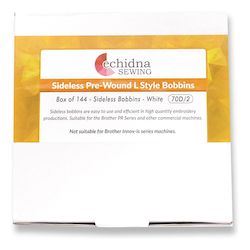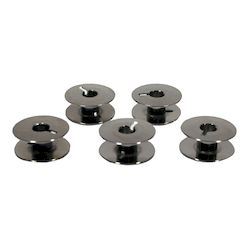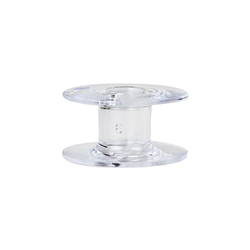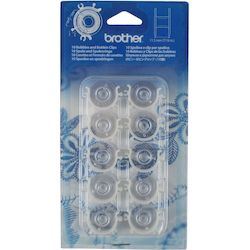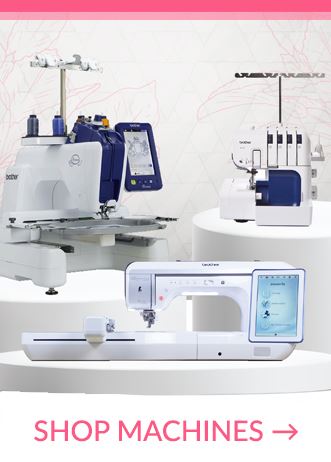Choosing the Right Bobbin for Your Machine
Author: Ella Holmes Date Posted:15 February 2023
Bobbins come in different sizes or “styles”, can be made of plastic, metal, or cardboard, can be sideless, and can be purchased empty or pre-wound with thread. Many of them may look very similar at a glance, so if you've ever been unsure about what bobbin you're holding or what style you need to buy, we totally get it!
Choosing the correct bobbin style and type is very important as using the wrong one can cause damage to your machine. This article is meant as a general guide to the three most common bobbin styles. As always, it’s best to refer to your machine manual or manufacturer for information pertaining to your specific machine. Alternatively, you can call us with your machine model and we can help.
The three most common bobbin sizes in the home and domestic sewing industry are:
- A Style
- L Style
- M Style
The bobbin’s style is determined by its dimensions (height and diameter). In some cases, these dimensions are also represented by a letter, which is where we get names like A Style, L Style, and M Style.
What is the difference between A, L, and M Style bobbins?
- A style bobbins are most commonly used in domestic machines, and are also called “Class 15” and “SA156”. Many modern drop-in bobbin machines take A Style bobbins and they are also used in a wide range of home sewing machines with a push-in style bobbin case.
- L style bobbins are the smallest of the three, and are commonly used in commercial machines such as multi-needle embroidery machines and many industrial straight stitch sewing machines.
- M style bobbins are the largest of the three, and are commonly used in long-arm quilting machines. This bobbin holds nearly double the amount of thread of an L Style bobbin.

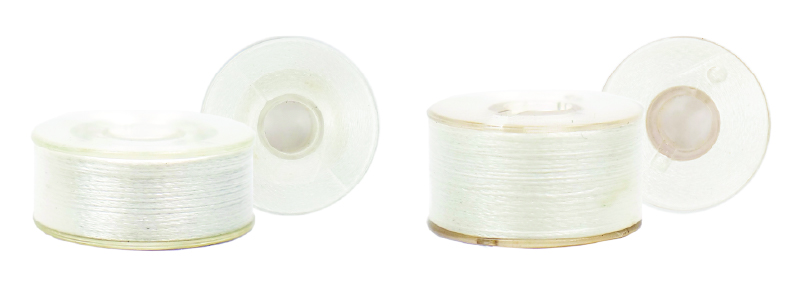
Now that you know all about bobbin styles, let's go over Bobbin Types
Bobbin “type” here refers to what the bobbin is made out of, like plastic or metal. Choosing the right bobbin type is as important as finding the right bobbin style. For example, most front-loading industrial machines are compatible with magnetic and sideless bobbins.
It is best practice to use the same bobbin type that came with your machine, unless otherwise specified by the manufacturer. This means that if your machine came with plastic bobbins, you should use plastic bobbins. You may find the right bobbin style (A style, L style, M Style) in plastic, metal, etc, but that doesn’t mean they’re interchangeable! You may also find that even if your machine does accept multiple bobbin types, your machine may not like them all equally. It’s a good idea to pay close attention to your machine to get a feel for when it’s not liking something or working as best as it can be.
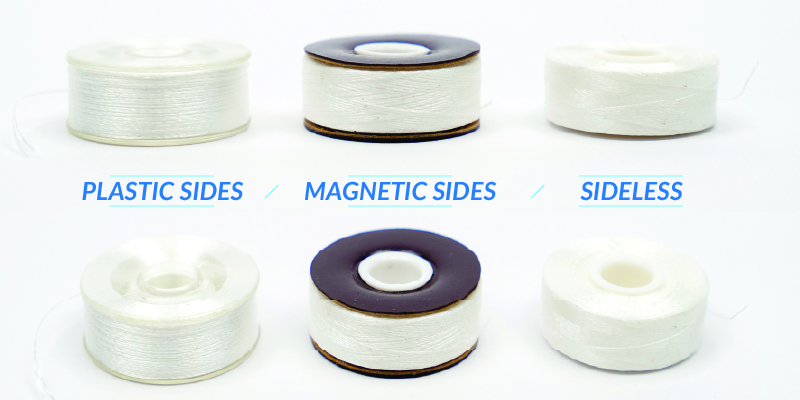
Some bobbin types include:
Plastic bobbins: the sides and the centre coil are made of plastic. Clear plastic makes it easier to see the colour of your thread and is generally cheaper than purchasing metal alternatives. We don’t recommend re-using plastic pre-wound bobbins as they are designed for single use and are not generally suitable for rewinding.
Magnetic-sided bobbins: the sides of the bobbin are fitted with magnets, which helps create consistent tension and consistent thread delivery. Magnetic sides also help prevent bobbin over-spin, which is when the bobbin continues to rotate after you’ve stopped stitching. Not to mention, they won’t fall out of your bobbin case! They’re compatible with most commercial-style embroidery machines.
Sideless bobbins: bobbins that are the centre coil only, with no flat sides encasing the thread. They’re very light, which reduces the risk of over-spin, and are compatible with most commercial-style embroidery machines. There may be a little more thread on them due to the fact that there are no sides.
You can listen to Gary talk about the difference between magnetic and sideless bobbins here →
Now, choosing the right bobbin for your machine is easy!
Your machine should come with bobbins. If you’re not sure how to identify what style they are, try taking a look at your machine’s guidebook or user manual. It may mention either the style or the dimensions.

Alternatively, you can always compare your bobbins to bobbins in-store, where you can also ask an expert who can help you identify the style. You can also contact us online or over the phone and let us know your machine brand and model, and we’ll help you.
Using your bobbins
Once you know which bobbin your machine takes, follow the directions on your machine to insert your bobbin, and away you go! If you’re a sewist, you can wind your own bobbins with your sewing thread of choice. Just remember to always use a quality brand bobbin fill thread, and try matching it to the colour of your needle thread for consistency.
If you’re an embroiderer, you also have the option of purchasing pre-wound bobbins. Pre-wound bobbins are excellent because they save you time and are more likely to be evenly wound.
If you’re having issues between bobbin changes, tension may be the cause. Watch our video on checking your bobbin tension →




